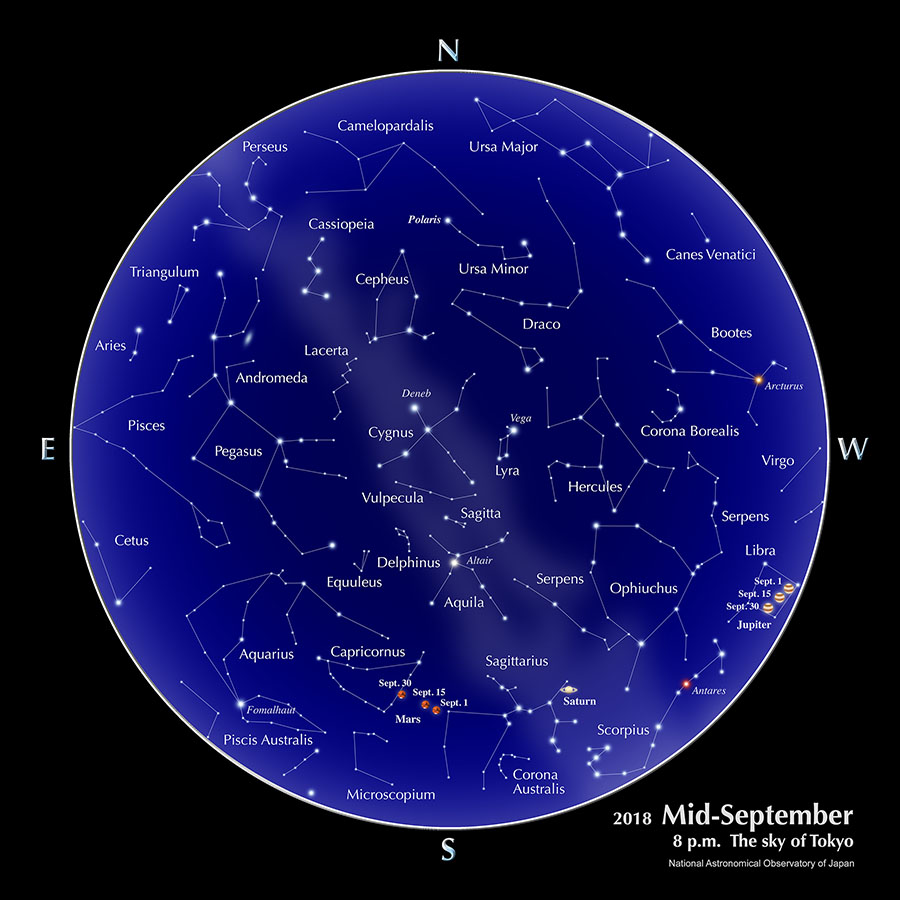The sky of Tokyo, Calendar, Planets (September, 2018)
The sky of Tokyo

Calendar (September)
| 3 | Last Quarter Moon |
| 6 | Saturn at stationary point |
| 10 | New Moon |
| 17 | First Quarter Moon / Respect-for-the-Aged Day [Keiro-no-hi](national holiday) |
| 21 | Mercury at superior conjunction / Venusat Greatest Brillancy |
| 23 | Autumnal Equinox Day [Shubun-no-hi] (national holiday) / Autumn equinox (Sun’s ecliptic longitude 180°) |
| 24 | Holiday / Chushu Moon |
| 25 | Full Moon |
Planets
- Mercury
- Mercury reaches superior conjunction on September 21. Its apparent position is close to the Sun and not suited for observation.
- Venus
- Bright Venus is low in the western to southwestern sky just after sunset. Venus reaches its greatest brilliancy on September 21 (-4.6 magnitude). In the end of the month, its position is close to the Sun, making observation difficult. Its brightness is -4.4 magnitude to -4.6 magnitude.
- Mars
- Mars moves east (direct motion) in the constellation Capricornus. In the beginning of September, it reaches culmination around 9 p.m. In the end of September, it reaches culmination around 8 p.m. Its brightness is -2.1 magnitude to -1.3 magnitude.
- Jupiter
- Jupiter moves east (direct motion) in the constellation Libra. It can be seen after sunset low in the southwestern sky. But in the end of September, it sets about two hours after sunset. Its brightness is -1.9 magnitude to -1.8 magnitude.
- Saturn
- Saturn moves west (retrograde motion) in the constellation Sagittarius. It reaches its stationary point on the 6th and after passing the stationary point it moves east (direct motion). At the stationary point, it seems to stop with respect to the stars. It can be seen in the southern to southwestern sky after sunset. Its brightness is 0.4 magnitude to 0.5 magnitude.
Reference: Ephemeris Computation Office, NAOJ
With the “Sky Viewer” you can easily explore the appearance of a typical urban night sky (planets and constellations are visible). The Celestial Phenomena section of the glossary explains the planetary phenomena terms: greatest elongation, opposition, conjunction, stationary, etc.